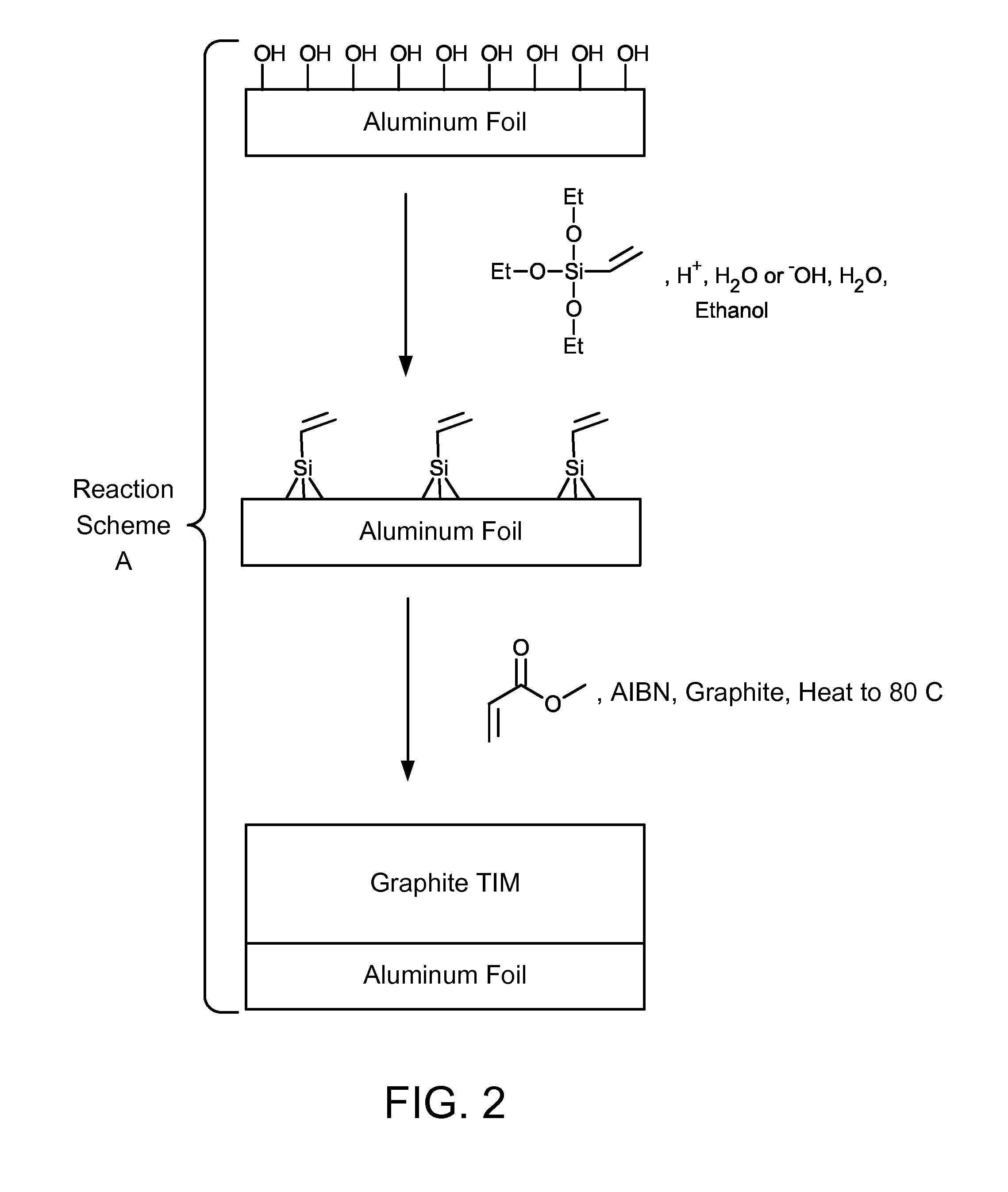Thermal interface material (TIM) with thermally conductive integrated release layer
a technology of thermally conductive and integrated release layer, which is applied in the direction of transportation and packaging, semiconductor/solid-state device details, coatings, etc., can solve the problem of aluminum foil release layer tending to shear away
- Summary
- Abstract
- Description
- Claims
- Application Information
AI Technical Summary
Benefits of technology
Problems solved by technology
Method used
Image
Examples
example
(Reaction Scheme B)
[0056]An acid bath for use in the first step of the reaction scheme B is prepared. A surface of aluminum foil (20 μm thickness) is amine functionalized by placing the aluminum foil in the acid bath for up to 2 hours. The acid bath includes: aminopropyltriethoxysilane (1-5 wt %); ethanol (90-98 wt %); and water (0.1-5 wt %). The pH of acid bath is dropped to approximately 4.5 using acetic acid. Aminopropyltriethoxysilane is a commercially available amine-terminated silane coupling agent. The aqueous solution of acid acts as a catalyst. An epoxy resin formulation for use in the second step of the reaction scheme B is prepared. The epoxy resin formulation includes: EPIKOTE Resin 828LVEL (available from Momentive Specialty Chemicals, Inc., Columbus, Ohio) (100 parts); dicyandiamide (5 parts); and 2-ethyl-4-methylimidazole (1 part). EPIKOTE Resin 828LVEL is a biphenol-A type epoxy resin produced from bisphenol A and epichlorohydrin. Dicyandiamide and 2-ethyl-4-methylim...
PUM
| Property | Measurement | Unit |
|---|---|---|
| thickness | aaaaa | aaaaa |
| thickness | aaaaa | aaaaa |
| thickness | aaaaa | aaaaa |
Abstract
Description
Claims
Application Information
 Login to View More
Login to View More - R&D
- Intellectual Property
- Life Sciences
- Materials
- Tech Scout
- Unparalleled Data Quality
- Higher Quality Content
- 60% Fewer Hallucinations
Browse by: Latest US Patents, China's latest patents, Technical Efficacy Thesaurus, Application Domain, Technology Topic, Popular Technical Reports.
© 2025 PatSnap. All rights reserved.Legal|Privacy policy|Modern Slavery Act Transparency Statement|Sitemap|About US| Contact US: help@patsnap.com



